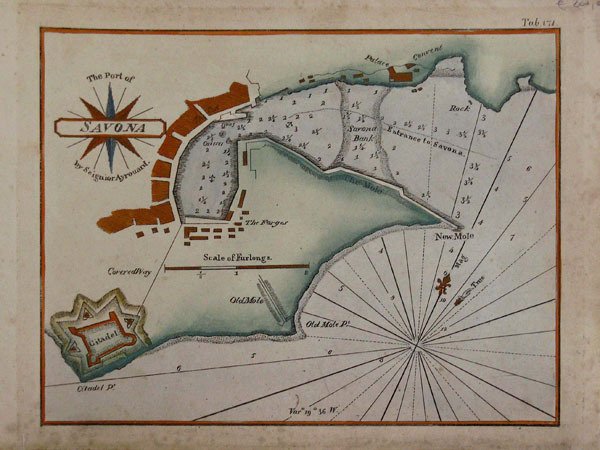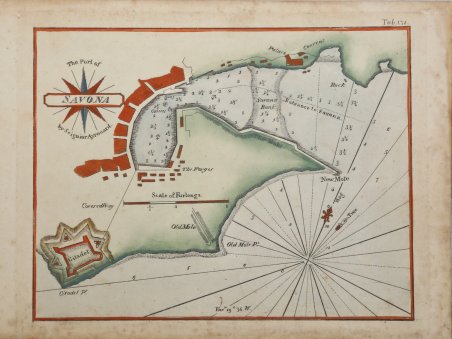Dettagli
Anno di pubblicazione
1802
Descrizione
Rara carta nautica pubblicata da William Heather a Londra. La carta è orientata con il nord in alto. ' ' Include scandagli, alcune caratteristiche topografiche e ancoraggi. Le carte del ' New Mediterranean Pilot ' di Heather sono estremamente rare sul mercato. Questa piccola carta proviene dal primo tentativo inglese di raccogliere i porti del Mediterraneo, sebbene il genere fosse già ben consolidato in Francia, Italia e Spagna. La prima fu pubblicata da Joseph Roux a Marsiglia nel 1764, con versioni pubblicate in diverse città portuali italiane. La raccolta di Heather si distingue per le carte finemente incise, molte delle quali firmate in monogramma dall'incisore londinese John Stephenson. William Heather (1764-1812) iniziò la sua attività nel 1793, come editore e commerciante di carte e strumenti nautici. Aveva imparato il mestiere dall'editore di carte nautiche e insegnante di navigazione John Hamilton Moore, presso il quale risiedette per cinque anni. I locali di Heather si trovavano nella stessa strada della Compagnia delle Indie Orientali, al 157 di Leadenhall Street, sotto l'insegna del "Little Midshipman", in seguito noto come "Navigation Warehouse". Nel 1796 si mise in società con il suo vicino di casa, Thomas Williams, venditore di libri e stampe, e l'attività fu chiamata "Heather and Williams", o Heather & Co. In questo periodo John Norie, un altro allievo di John Hamilton Moore, si unì all'azienda come disegnatore di carte nautiche e insegnante di navigazione. Alla morte di Heather, nel 1812, Norie avrebbe rilevato l'azienda e l'avrebbe trasformata nella principale casa editrice indipendente di carte nautiche del XIX secolo. L'azienda sarà poi immortalata da Charles Dickens in Dombey & Sons. Acquaforte, in ottimo stato di conservazione. Rare chart published by William Heather in London. The chart is oriented with north at the top. ' ' It includes soundings, some topographical features and anchorages. Towers, churches, and ruins are given as landmarks for taking one's bearings in the harbor. The charts from Heather's ' New Mediterranean Pilot . . . ' are extremely rare on the market. This small chart comes from the first English attempt at a collection of ports of the Mediterranean, although the genre was well established in France, Italy, and Spain already. The first was published by Joseph Roux in Marseilles in 1764, with versions published in several Italian port cities. The French and Italian versions were of relatively crude execution, but Heather’s version is notable for the finely engraved charts, many signed in monogram by the London engraver John Stephenson. William Heather (1764–1812) started business in 1793, as a publisher and dealer in charts and nautical instruments. He had learnt is trade from the chart publisher and teacher of navigation John Hamilton Moore, with whom he resided for five years. Heather’s premises were based on the same street as the East India Company, at 157 Leadenhall Street, under the sign of the ' ?‘Little Midshipman’, later known as the ' ?‘Navigation Warehouse’. In 1796, he joined in partnership with his neighbour, book and printseller, Thomas Williams, with the business being known as ' ?‘Heather and Williams’, or Heather & Co.; the partnership would last until 1800. During this time John Norie ' – ' another pupil of John Hamilton Moore ' – ' joined the firm, as a draftsman of charts and teacher of navigation. Norie would later take over the business following Heather’s death in 1812, and turn it into the leading independent chart publisher’s of the nineteenth century. The business would later be immortalised by Charles Dickens, in Dombey & Sons. Cfr.


Scopri come utilizzare
Scopri come utilizzare

